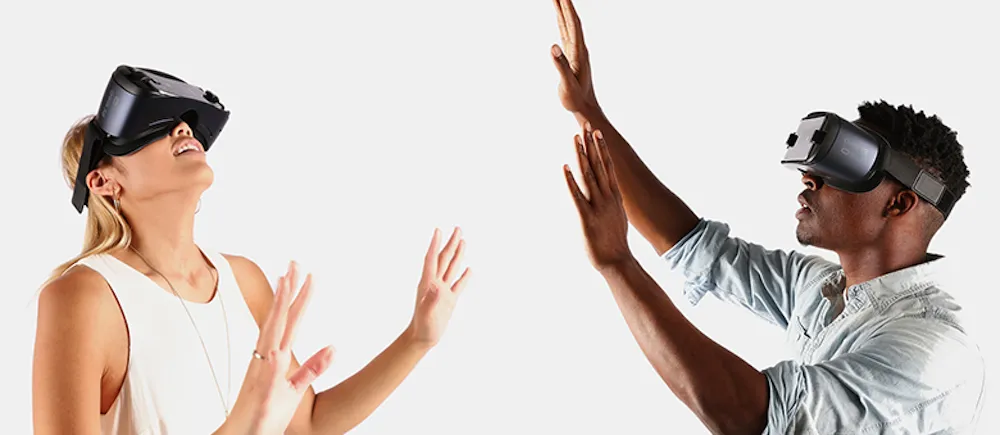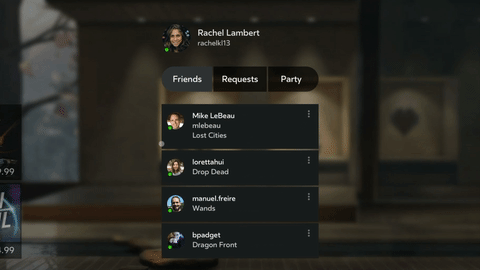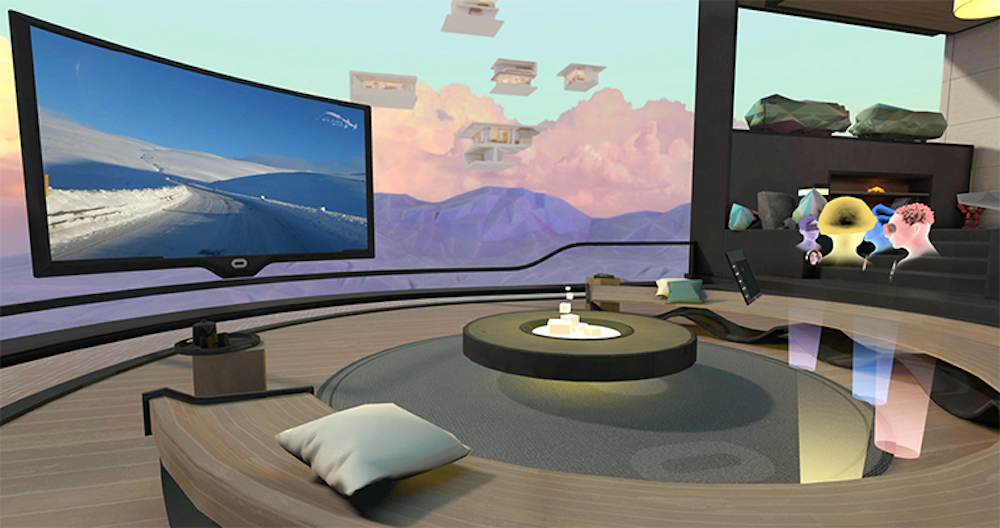Ever since Oculus was acquired by Facebook in 2014 the industry has wondered how exactly the Silicon Valley titan’s massive social media influence would shape its new acquisition. Since the $2.4 billion dollar deal was struck there have been a small handful of social VR appetizers (Oculus Social) and convention hall tech demonstrations. Now, however, Facebook and Oculus are taking their most significant step in the race to interconnected VR experiences.
A new update to the Gear VR version of Oculus Home is enabling two brand new features that will allow VR users to connect with one another like never before. The first is Oculus Parties — a VR chat experience for you and your friends. According to the official Oculus blog, “Oculus Parties lets you and up to three friends join a voice call from anywhere in VR. Parties ensure that no matter where you go on the platform, you can always communicate with your friends.”
Connecting to parties is fairly simple. All you need to do is, “Click the ‘Party’ tab in Oculus Home, select who you want to join the party, and you’re good to go.”
In addition to parties, you can now experience Oculus Rooms as well. In Oculus Rooms you can enjoy “a private virtual space to spend time with friends in VR,” that will “enable social activities that mirror how you may hang out with friends in real life.”
Access to Oculus Rooms will be facilitated through Oculus Parties itself. According to the company:
“Once you and your friends are in a Party together, you can easily join Oculus Rooms. From there, you can choose what you’d like to do: gather around the TV and watch videos, play matching or guessing games, or hit the group app launcher to jump to a multiplayer game like Dragon Front or Drop Dead. Look for even more apps to support this feature in the coming months.”
Rooms and Parties are significant steps for the Oculus ecosystem for a few key reasons. The first is that they finally put your friends list to better use. Since launch, the Oculus Home friends list has been evolving toward usefulness. Oculus Rift owners have been giving their buddy list a workout with the addition of more and more multiplayer games, but these two new social experiences are some of the biggest use cases yet for your friends on Gear VR.
It also seems that Oculus and Facebook are in an active state of iteration with their social platforms. Oculus Social released with a few things to do (trivia, social theaters, etc.) but that platform has largely stagnated since release. The feature overlap with Oculus Social and Oculus Rooms leads one to believe that Rooms is the new poster child for pure social interaction on the Oculus platform.
Parties is also the first time Oculus and Facebook are allowing their customers to user a VR platform as a general communications tool. Third party creators like AltspaceVR have been doing this for a while now, but this is the first time that the folks in Menlo Park are taking a similar approach.
These two new social experiences are significant advances for the social VR movement and our best look yet at how Facebook will use its largest acquisition to date to further its main business: interconnecting the world. According to Oculus, “This is just the beginning of social VR. We’ll continue building fun ways to share presence and take social interactions in VR to a whole new level.































